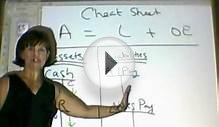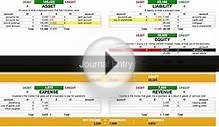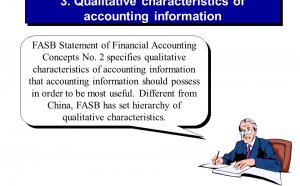
Financial Accounting Cheat sheet
Accounting is a system used in maintaining financial records for all types of businesses, organizations and institutions. Accounting systems are valuable tools for gauging a company’s fiscal health and charting its future growth. It touches the lives of employees of businesses both large and small. Unfortunately, for too many consumers and a few entrepreneurs, accounting can still be a mystery.
This brief summary will review the major terms involved in accounting, as well as provide online resources for learning more about this important component of any successful business.
At its core, accounting involves record-keeping. When you “account” for something, you’re keeping a record of certain events and actions in the business – by using the accounting system.
A bookkeeper or accountant collects the documentation and records the information, organizes it, and presents the documented information in certain formats. The information is typically presented using financial statements. Bookkeepers are generally more involved with the data collection and entering of relevant information into the accounting system. And although accountants do this as well, accountants tend to focus on analyzing, preparing and presenting the financial statements, as well as in fulfilling roles as advisors or consultants.
Assets
In accounting, there is one equation used quite regularly, particularly with regards to financial statements: assets = liabilities + equity.
When looking at a balance sheet’s format, you’ll see the equity, liability and asset accounts. The asset accounts tend to start with marketable securities accounts and cash accounts. Then you’ll see fixed assets which include things such as buildings, land, and equipment, accounts receivable, and inventory. These are considered tangible assets because they can be touched.
There are also things considered intangible assets, which includes customer goodwill. For more information, check out these resources:
Liabilities
Liabilities are debts that a business or entity has incurred during the covered period, including mortgage financing, business loan payments and installment loans. The debt can be any cash that leaves the business, but the most common of liabilities are loans and borrowed assets. Anyone who has supplied products which have been purchased using credit also falls under the creditor category. When loans are paid back to the creditors, some assets are leaving the business and in most cases, this is cash.
For more information about accounting liabilities, check out these online resources:
Owner’s Equity
Owner’s equity refers to a recurring interest in any assets of a business after all the liabilities have been deducted. In simpler terms, it’s an owner’s share of the businesses assets.
Assets can only belong to people to whom money is owed (liabilities) outside of the business or the actual owner (owner’s equity). Equity is a representation of assets in which the owner has a financial interest. After all liabilities are deducted and paid, equity is the value of any assets left. It’s what the owner actually owns.
The following links provide further reviews and discussions of the owner’s equity element of accounting.
Rules of Debits and Credits
When you hear the term debit in the context of accounting, it simply means entering information on the left a side of the ledger. Debit simply records a transaction or event that decreases the organization’s assets.
Similarly, the term credit in accounting refers to additions to the right side of the ledger and reflects additions to the organization’s assets. Although there are other meanings to credit, this meaning is in relation to accounting. For more information about how debits and credits are used in accounting systems, check out the following online articles:
Balance Sheet
A balance sheet shows a summary of liabilities, owner’s equity, and assets for a defined period. It’s basically a snapshot of the business at a certain point in time.
These are usually drawn up on a yearly basis but show balances of different accounts on the final day of the actual reporting period. For instance, if it is expected that assets will be used or sold within the year from the date of the balance sheet, it will be classified as current. If will be used for longer than a year, it will be classified as not being current.
YOU MIGHT ALSO LIKE


Share this Post
Related posts
Financial Accounting Programs
The curriculum comprises 4 required courses and 12 semester units of electives for a total of 24 semester units (360 hours…
Read MoreFinancial Accounting Information
An accounting information system (AIS) is a structure that a business uses to collect, store, manage, process, retrieve and…
Read More










